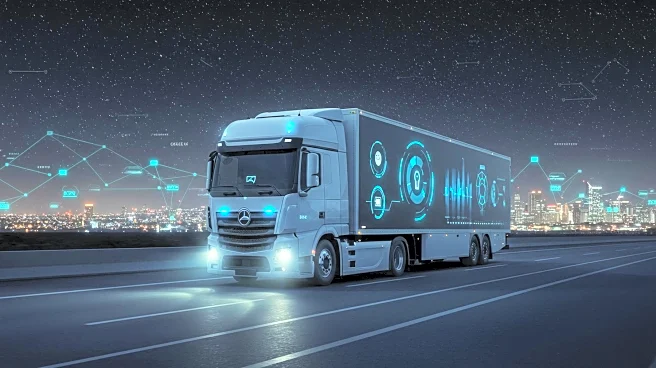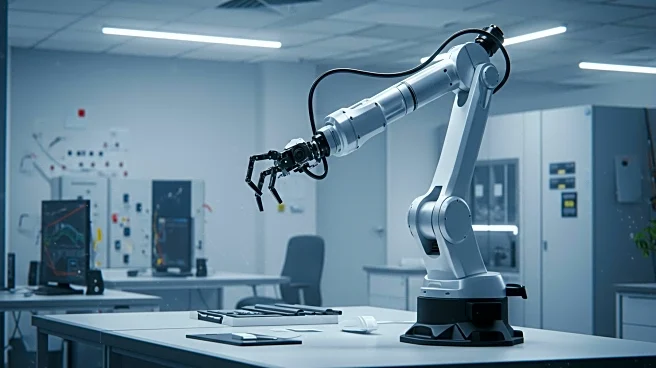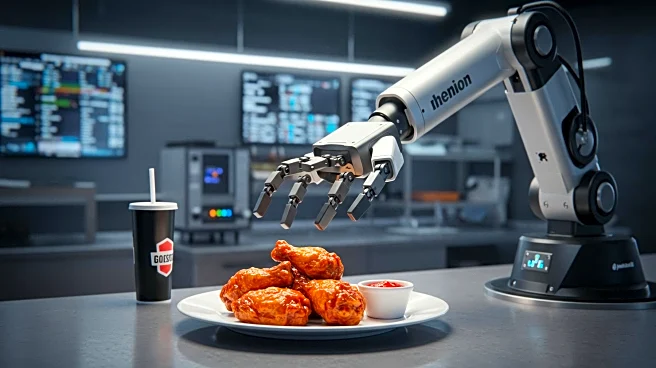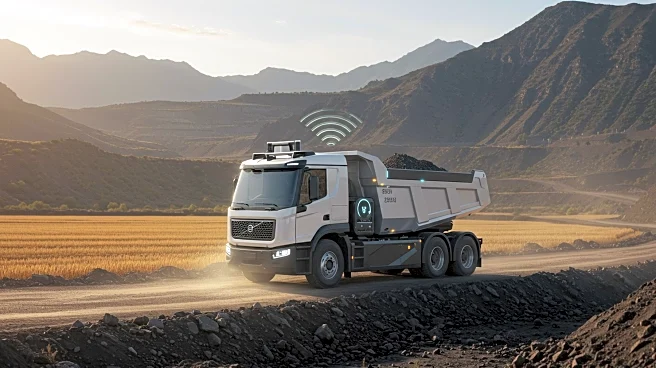What's Happening?
The trucking industry is increasingly adopting artificial intelligence (AI) as a critical tool to navigate shrinking margins and complex operational demands. AI is being utilized to automate repetitive tasks, predict maintenance needs, and improve driver retention strategies. The industry faces an overwhelming influx of data from telematics systems, transportation management systems, electronic logging devices, onboard cameras, IoT sensors, and driver apps. AI helps process this data in real-time, uncovering inefficiencies and boosting productivity and profitability. The adoption of AI is driven by the need to meet high customer expectations for accurate ETAs, real-time tracking, and responsive communication, which traditional methods struggle to achieve at scale.
Why It's Important?
The integration of AI in the trucking industry is crucial for maintaining competitiveness and profitability. As customer expectations rise, AI enables carriers to streamline operations, reduce costs, and maximize resource utilization. This transformation is essential in a market where spot rates have fallen and operating costs remain high. AI-driven automation allows carriers to handle higher freight volumes with existing resources, turning cost centers into profit drivers. The adoption of AI is not just about keeping pace but staying ahead, as major fleets are already using AI for freight forecasting, pricing optimization, and driver safety coaching.
What's Next?
The trucking industry is at a pivotal moment where the adoption of AI is becoming a competitive necessity. Companies that embrace AI now are laying the groundwork for long-term agility and resilience. As AI tools become more affordable and widespread, the industry standard is rising, and the risk of being left behind is significant. The focus will be on integrating AI-driven automation into planning, dispatch, and network design to ensure sustained profitability and operational efficiency.
Beyond the Headlines
The adoption of AI in trucking also raises ethical and cultural considerations, such as the impact on employment and the need for retraining workers. As AI automates more tasks, the industry must address potential job displacement and ensure that workers are equipped with the skills needed to operate and manage AI systems. Additionally, the use of AI in decision-making processes must be transparent and accountable to maintain trust among stakeholders.












